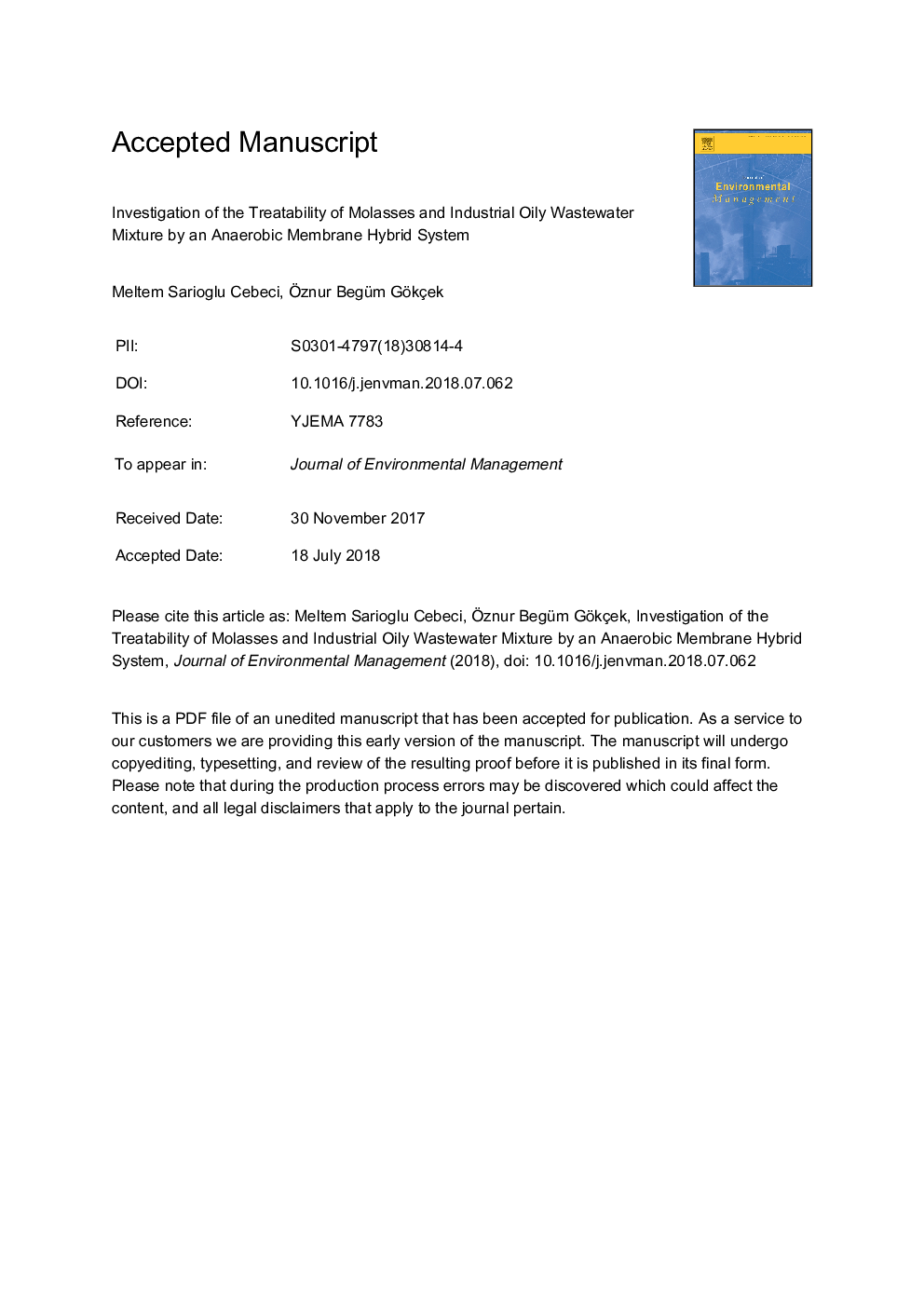| Article ID | Journal | Published Year | Pages | File Type |
|---|---|---|---|---|
| 7475675 | Journal of Environmental Management | 2018 | 43 Pages |
Abstract
In this study, the anaerobic treatability of automotive industry wastewater and its treatment in the subsequent membrane system were examined by using molasses, which is a waste of the sugar industry, as a co-substrate. Organic loadings of 3-3, 5-4, and 5gCOD/L/day were applied to a UASB reactor made of steel with a working volume of 7â¯L. The hydraulic retention time (HRT) was kept constant at 2 days. Temperature, pH, COD, alkalinity, Volatile Fatty acid (VFA) and biogas were monitored. The best COD removal was achieved at the value of 4 gCOD/L/day. The average COD removal rate was 77%. The effluent from the UASB reactor was transferred to the membrane system. The flux reductions of the PW10 kDa UF membrane at different concentrations were 1.717 gCOD/L, 1.934 gCOD/L, 2.257 gCOD/L, 4 gCOD/L, and 8 gCOD/L, and they were 90.78%, 42.69%, 45.88%, 51.00%, and 56.60%, respectively, at the input concentrations. The flux reductions of the UE50 100â¯kDa UF membrane at the input concentrations of 4 gCOD/L and 8 gCOD/L were 76.00% and 66.25%, respectively. It was determined that the UE50 100â¯kDa membrane caused more fouling compared to the PW 10â¯kDa UF membrane. Pore fouling models were determined for the flux reduction in the membranes and the mechanism behind it. Heavy metal and organic matter removals were examined in the effluent obtained from the membrane experiments.
Keywords
Related Topics
Physical Sciences and Engineering
Energy
Renewable Energy, Sustainability and the Environment
Authors
Meltem Sarioglu Cebeci, Ãznur Begüm Gökçek,
